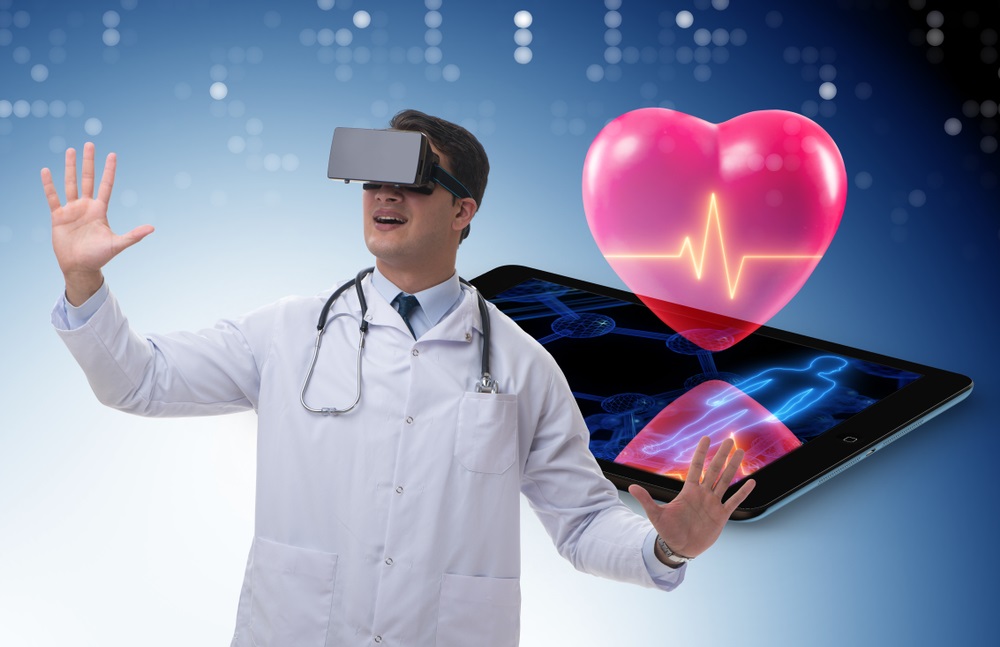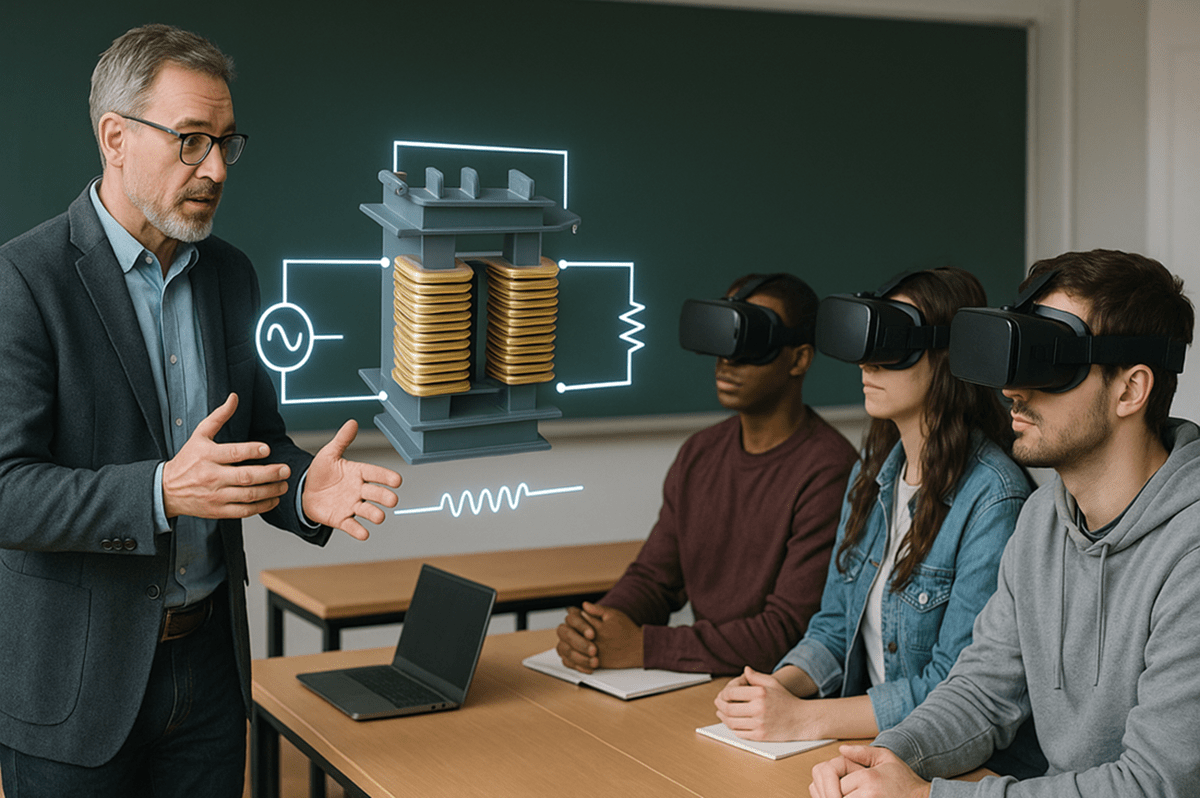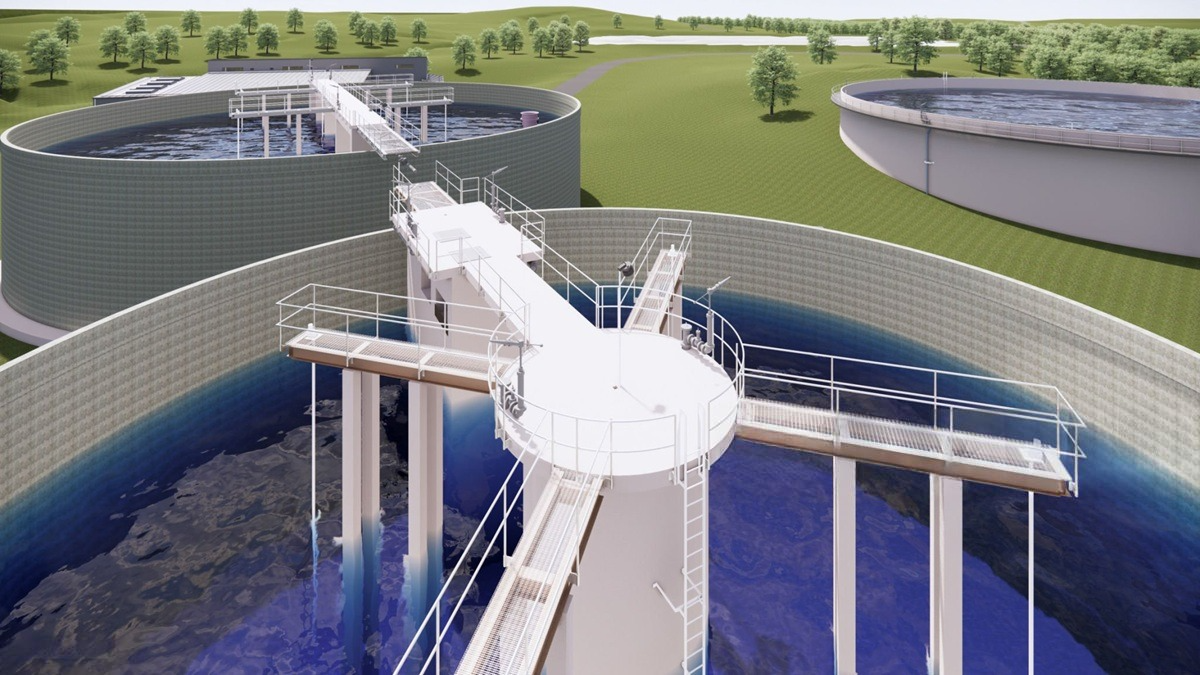Understanding Cardio-Respiratory Physiology through Virtual Models

Medical education is undergoing change at a fast pace. Today, healthcare professionals are actively exploring new approaches to educate and train budding students and learners moving beyond the traditional live patient scenario.
Among all these approaches, the use of Immersive technologies like virtual reality for educating medical professionals stands out as an effective technique.
The integration of virtual reality has made it possible for students to learn about complex human systems like Cardio-Respiratory Physiology.
This blog delves into the impact of virtual reality models, shedding light on how they have significantly facilitated the learning process for students.
Dynamic Simulations for Functional Understanding of Cardiovascular System
The traditional educational approach of education demands students to learn from textbooks or lectures.
However, static 2D diagrams and textbooks can only convey so much.
VR simulations take learning to the next level by offering dynamic simulations. By wearing a VR headset, students can step inside the human body and witness the journey of a red blood cell through the circulatory system or observe the heart's response to varying levels of physical activity. Thus, looking at the processes through the naked eye.
These simulations not only make learning enjoyable but also provide a practical understanding of how the cardiovascular system adapts to different situations.
Now imagine a student wearing a VR headset in a classroom. Within a few clicks, he can find himself standing beside a three-dimensional, beating heart that is the replica of the human heart.
Yes, it is not practically possible in the real world but virtual reality does the work. With VR for medical education, students can explore the intricacies of the cardiovascular system up close.
Detailed models of the heart, arteries, and veins allow students an immersive experience, enhancing the understanding of the structure and function of these vital components.
Exploring Respiratory System in VR
VR brings medical education to life.
The students can move seamlessly from the cardiovascular to the respiratory system by following an immersive journey through the lungs and airways.
The virtual models created in the virtual reality labs showcase the intricate network of bronchi and alveoli, allowing students to visualize the exchange of oxygen and carbon dioxide at a microscopic level.
This immersive experience breathes life into the often abstract concepts of respiratory physiology.
Moreover, learning about lung capacity and the mechanics of breathing becomes an engaging adventure within the virtual reality classroom.
With the help of virtual reality for medical education, students can perform various experiments. They can manipulate parameters such as tidal volume and respiratory rate, observing real-time changes in lung function.
With this hands-on experience, the students not only reinforce theoretical knowledge but they also get familiar with the complexities of the respiratory system.
Benefits of Virtual Reality in Cardio-Respiratory Education
From enhanced visualization that brings textbooks to life, to interactive simulations that actively involve students and the safe exploration of physiological scenarios, VR is shaping the future of how we understand and teach the intricacies of the human body-
✔️ Enhanced Visualization
Traditional textbooks and two-dimensional illustrations often fall short of capturing the intricate details of the cardiovascular and respiratory systems. But, in the traditional approach of education, the students are left with no choice but to learn from them only.
This approach to learning is changed in virtual reality. Virtual reality labs have become a transformative tool that opens up a world of enhanced visualization for students.
It is similar to a virtual feast for students where they are allowed to navigate through three-dimensional models of the heart, arteries, veins, lungs, and airways, providing them with an unforgettable experience.
This immersive experience of medical concepts goes beyond static depictions, allowing students to explore every nook and cranny of these complex physiological processes.
They can zoom in, rotate, and dissect virtual models. Thus, it provides an unprecedented level of detail to budding medical practitioners, enabling them to grasp even the most intricate concepts with unparalleled clarity.
✔️ Interactivity for Concept Reinforcement
While static models and diagrams have served as valuable learning aids for ages now, they often lack the dynamic engagement required for reinforcing theoretical knowledge effectively.
This gap is bridged by the virtual reality technology. VR in medical education has introduced an interactive element that transforms students from passive observers into active participants in their educational journey.
Within the virtual reality classroom, the students can manipulate virtual models, run different simulations, and observe real-time changes.
Students can adjust parameters, such as heart rate or respiratory rate, and witness immediate consequences, deepening their understanding of how these systems respond to different conditions.
This interactivity not only makes learning enjoyable but also cements theoretical knowledge in a way that traditional methods cannot.
✔️ Safe Exploration of Scenarios
In medical education, particularly in cardio-respiratory physiology, safety is paramount, especially when it comes to laboratory experiments.
With VR in surgical training, students can experiment with different conditions and observe the consequences of the cardio-respiratory system on a virtual human body without the constraints of a traditional hospital setting.
This not only eliminates potential risks associated with hands-on experiments but also allows students to witness the effects of factors like exercise, stress, or medical conditions on the body.
The ability of virtual reality labs to explore scenarios safely and comprehensively enhances the learning experience. Thus, providing a realistic yet controlled environment for students to develop a nuanced understanding of cardio-respiratory physiology.
"Transform Your Understanding of Cardio-Respiratory Physiology: Dive Deep into Interactive Virtual Models and Uncover the Intricacies of Heart and Lung Dynamics!"
Challenges and Future Directions
Virtual reality labs for medical education have a lot of potential, yet there are certain challenges like accessibility and cost of the setup and maintenance that need to be addressed.
As not all educational institutions may have the resources to invest in VR technology, effective efforts should be made to make this technology more accessible. This can happen through partnerships or by engaging with collaborative initiatives.
And, not to forget that is essential to integrate this immersive technology into the educational curriculum. So, educators must adopt some of the adequate training programmes to effectively utilize virtual reality tools.
Along with this, the curriculum developers must ensure that virtual experiences align seamlessly with the learning objectives of cardio-respiratory physiology courses.
Conclusion
To conclude, the integration of Virtual Reality into the study of cardio-respiratory physiology is the need of the hour.
The immersive experiences offered by VR not only make learning enjoyable but also deepen the understanding of complex physiological concepts.
As technology continues to evolve, the educational landscape stands to benefit from innovative tools that inspire curiosity and foster a deeper appreciation for the wonders of the human body.
Have you adopted this technology yet?


.png)
.png)

.png)